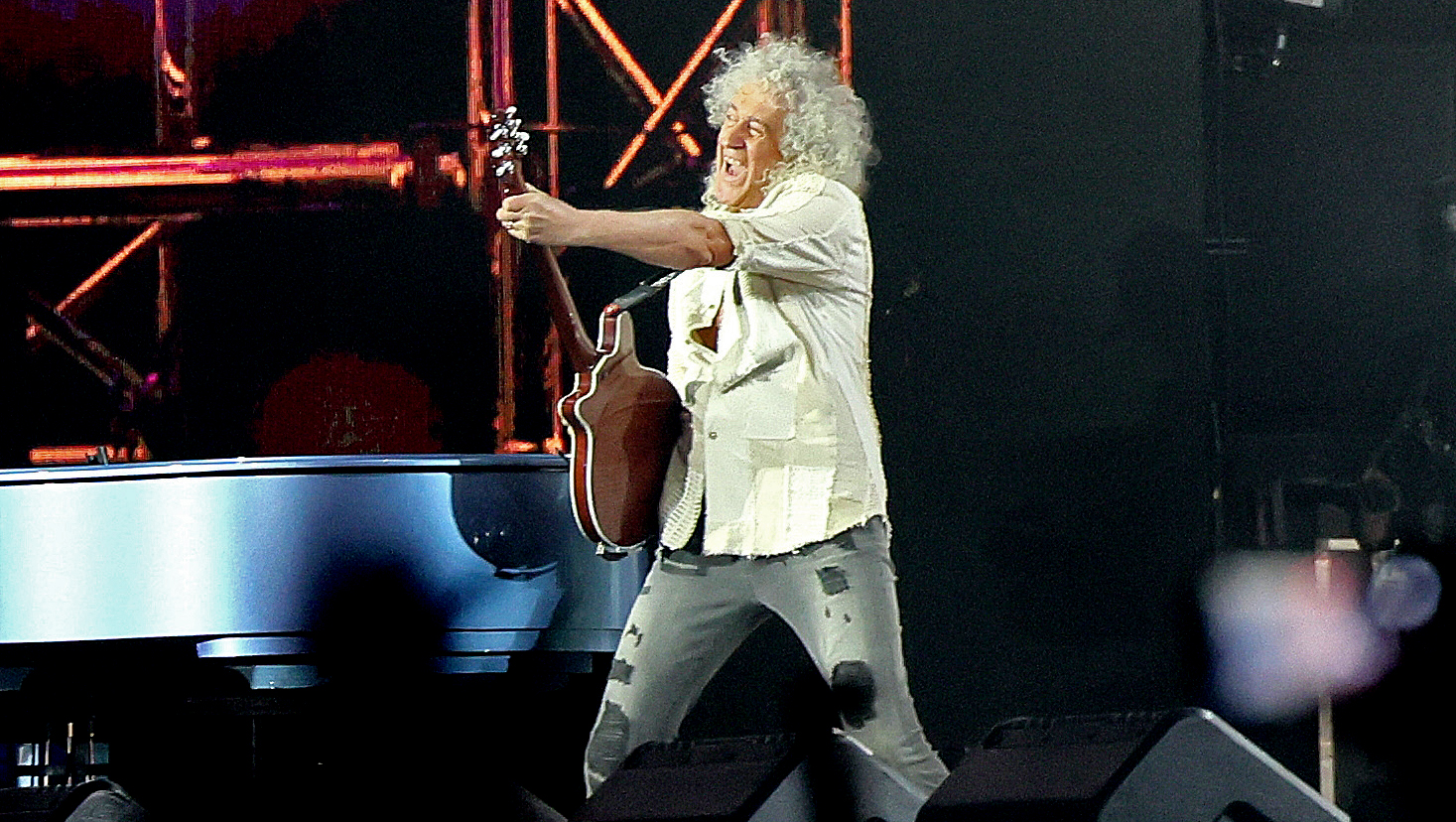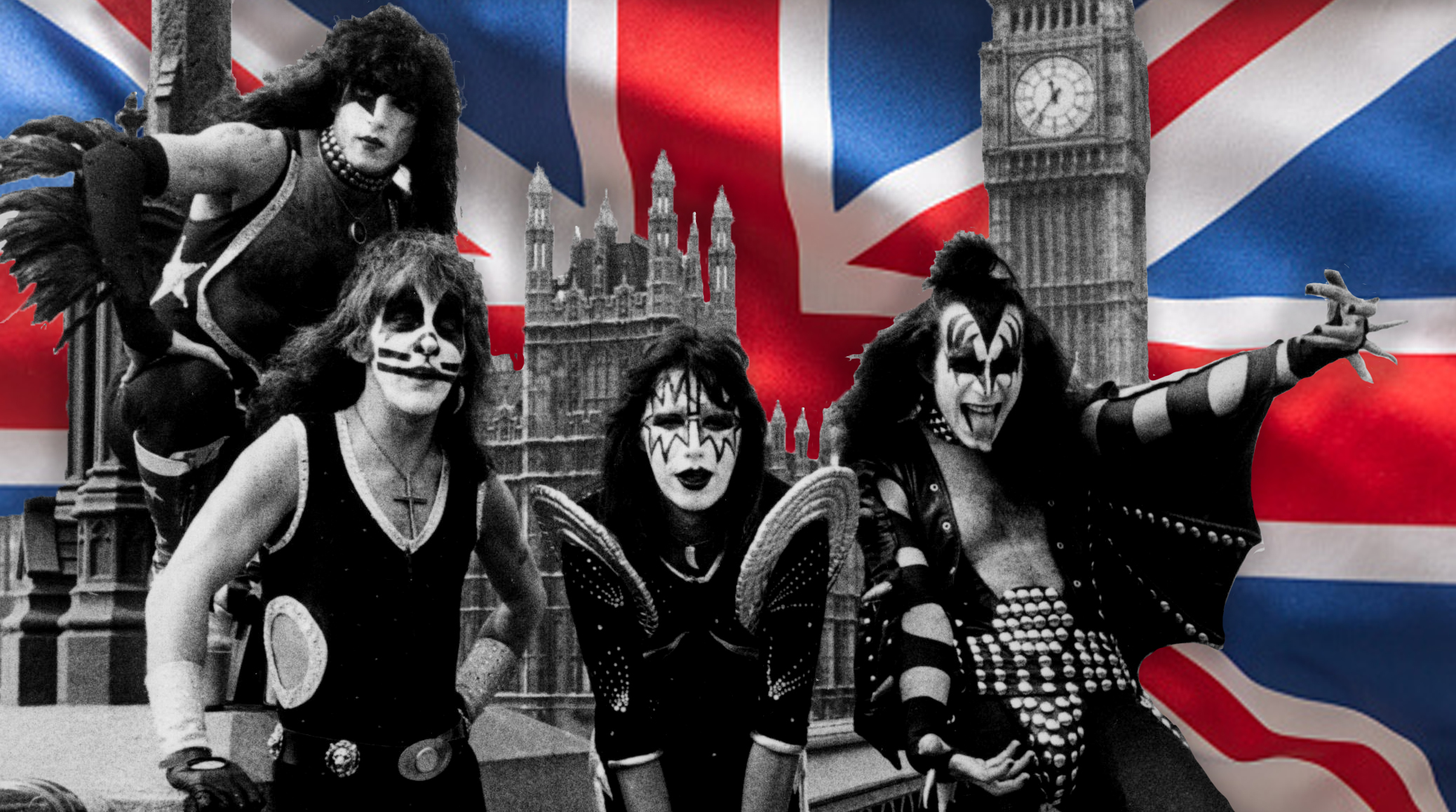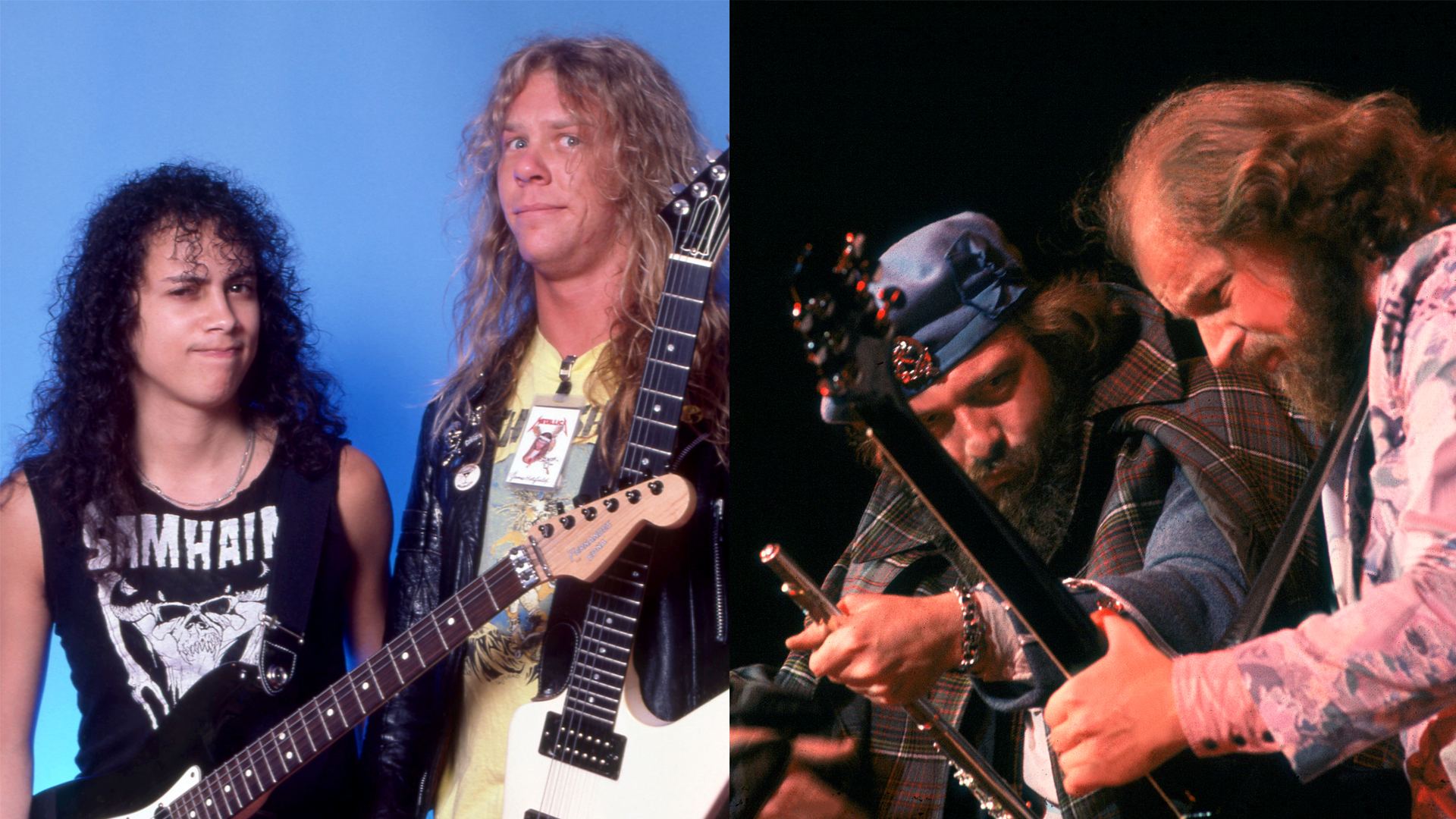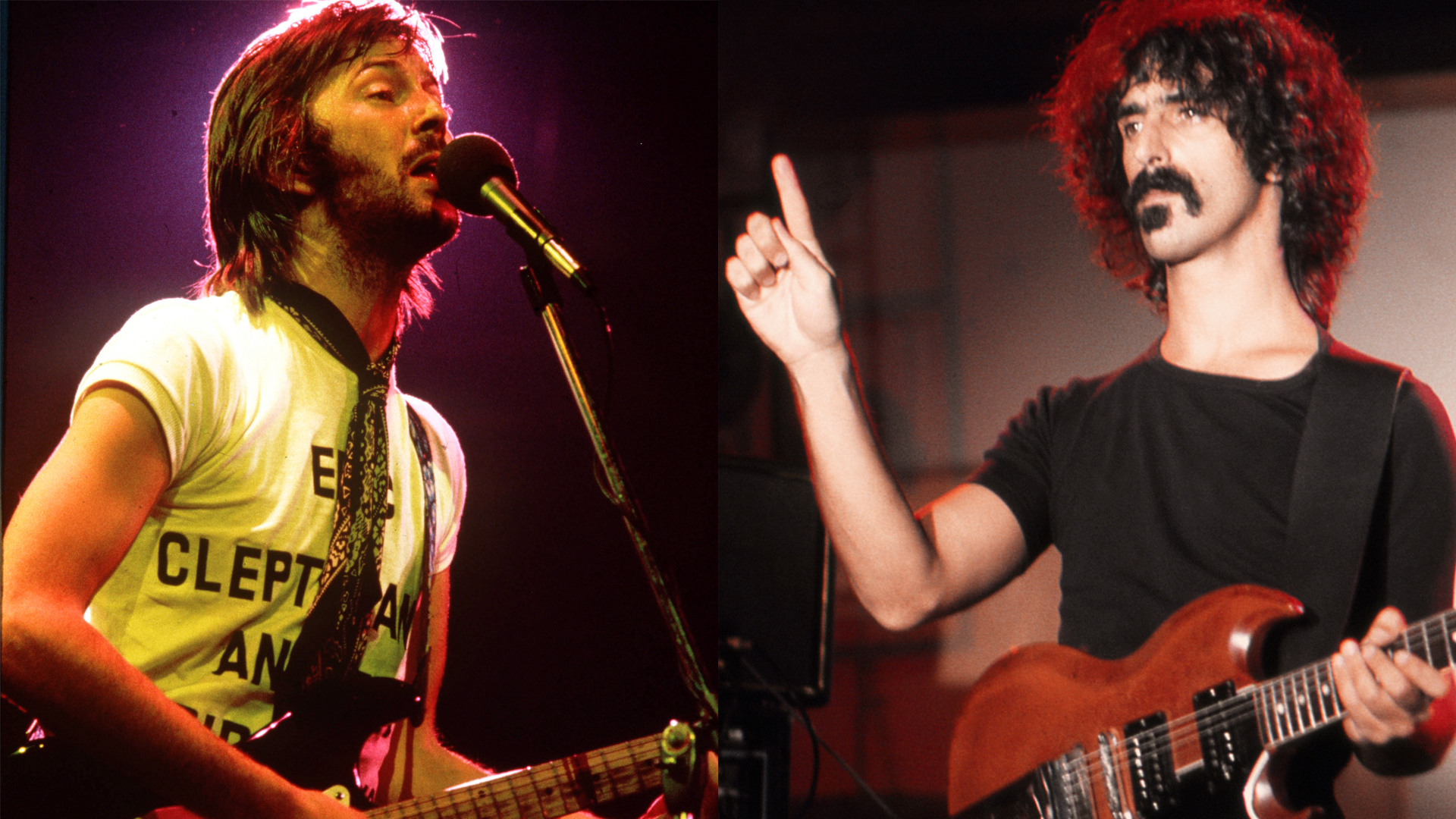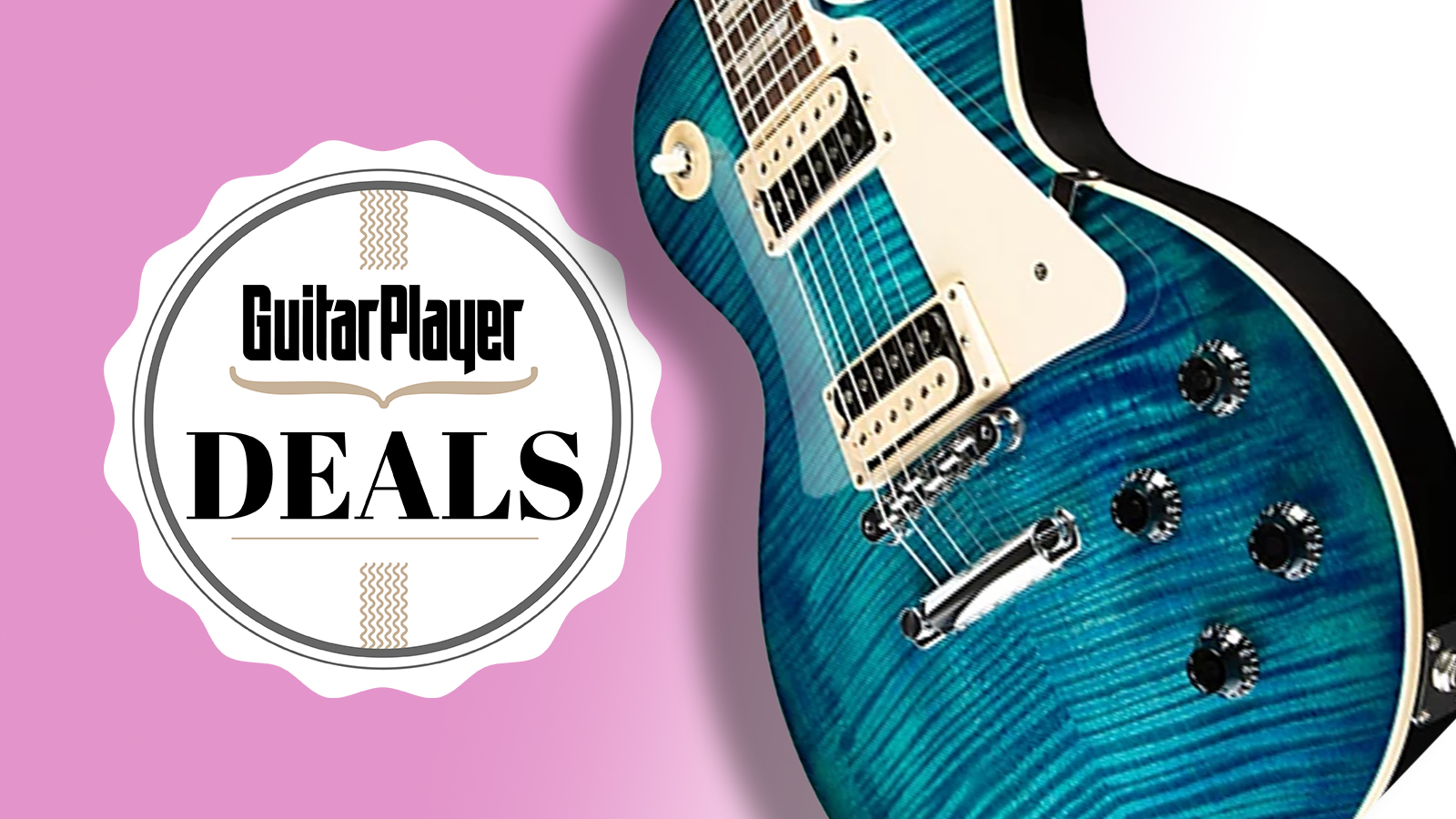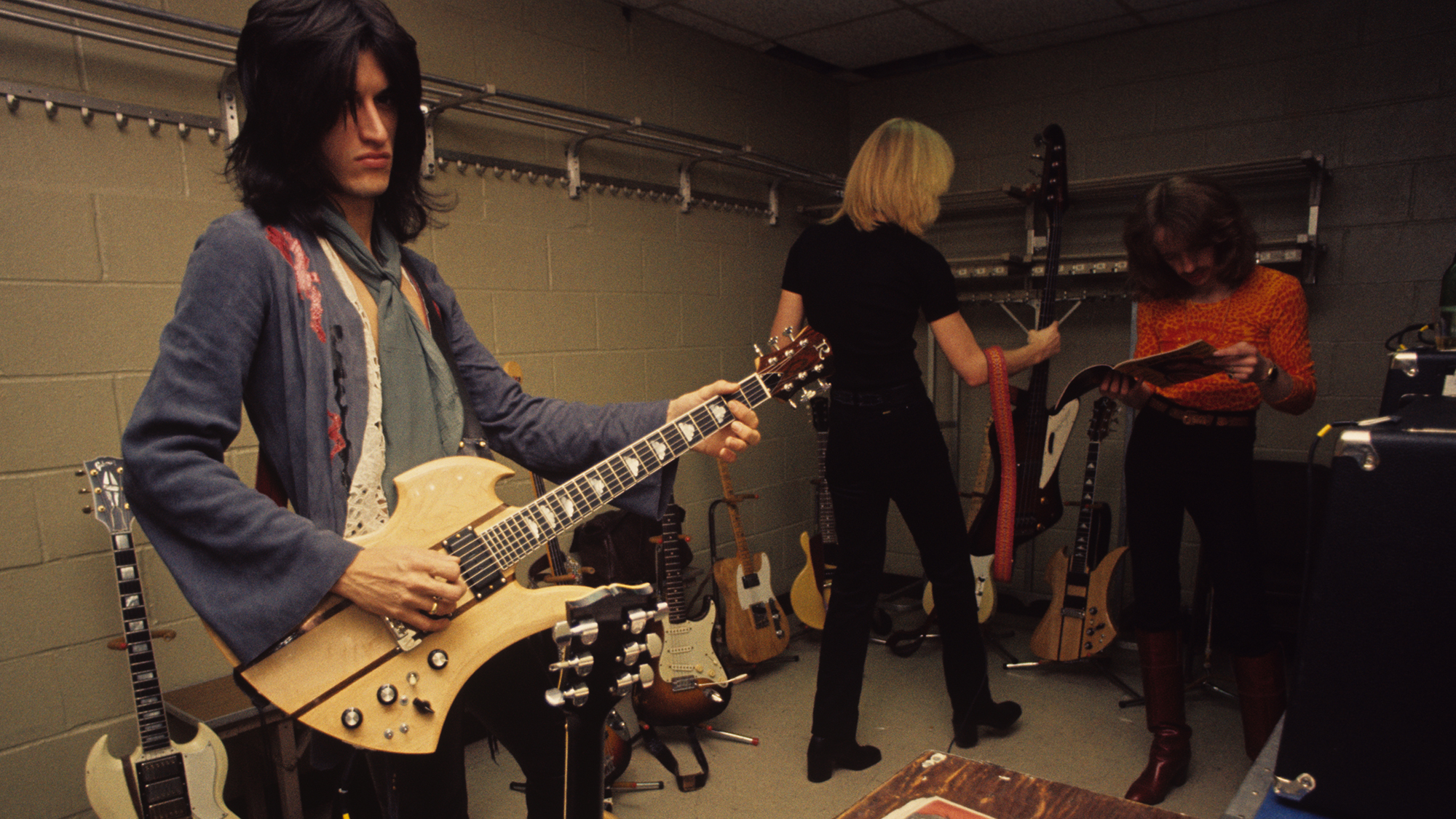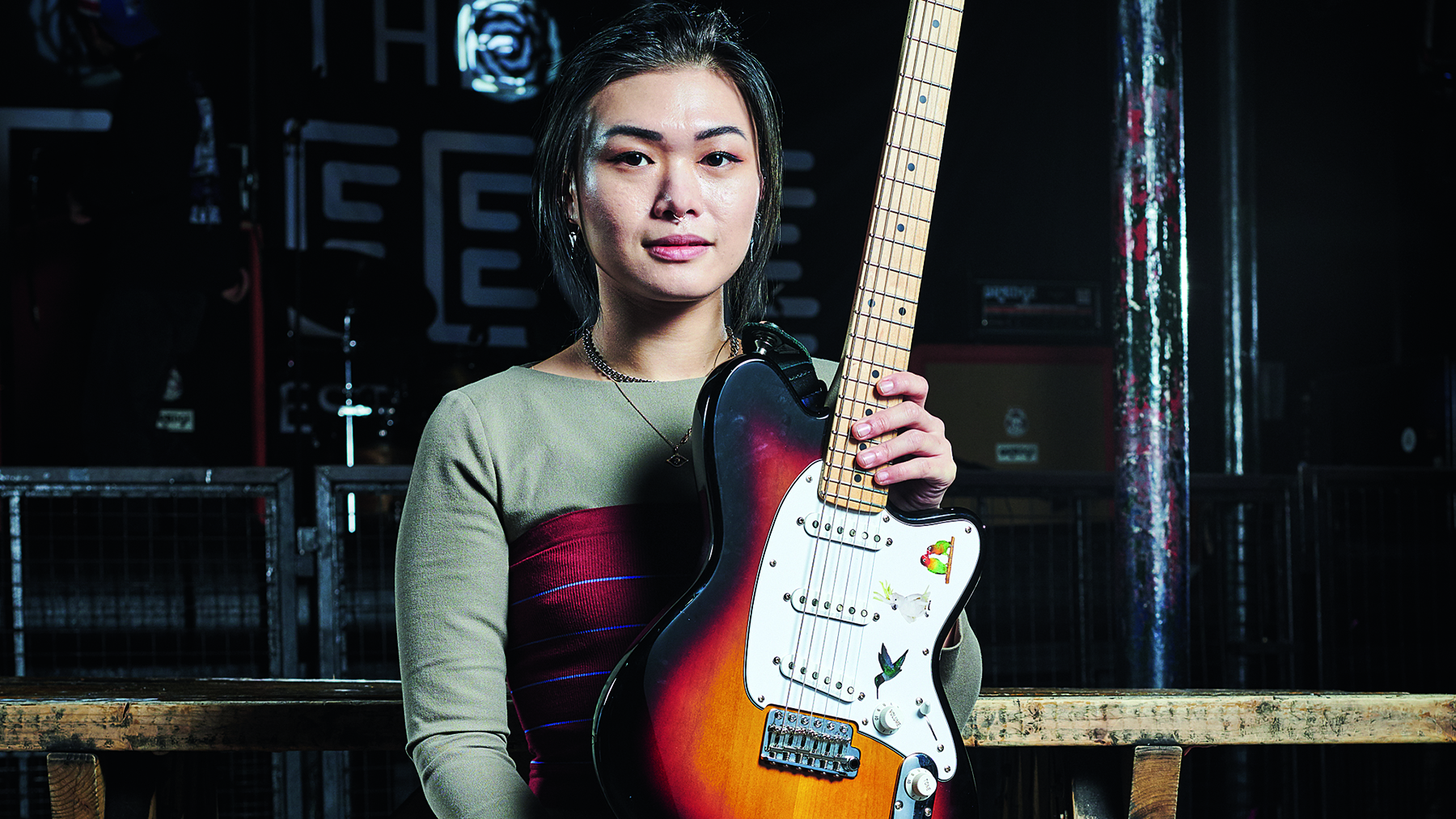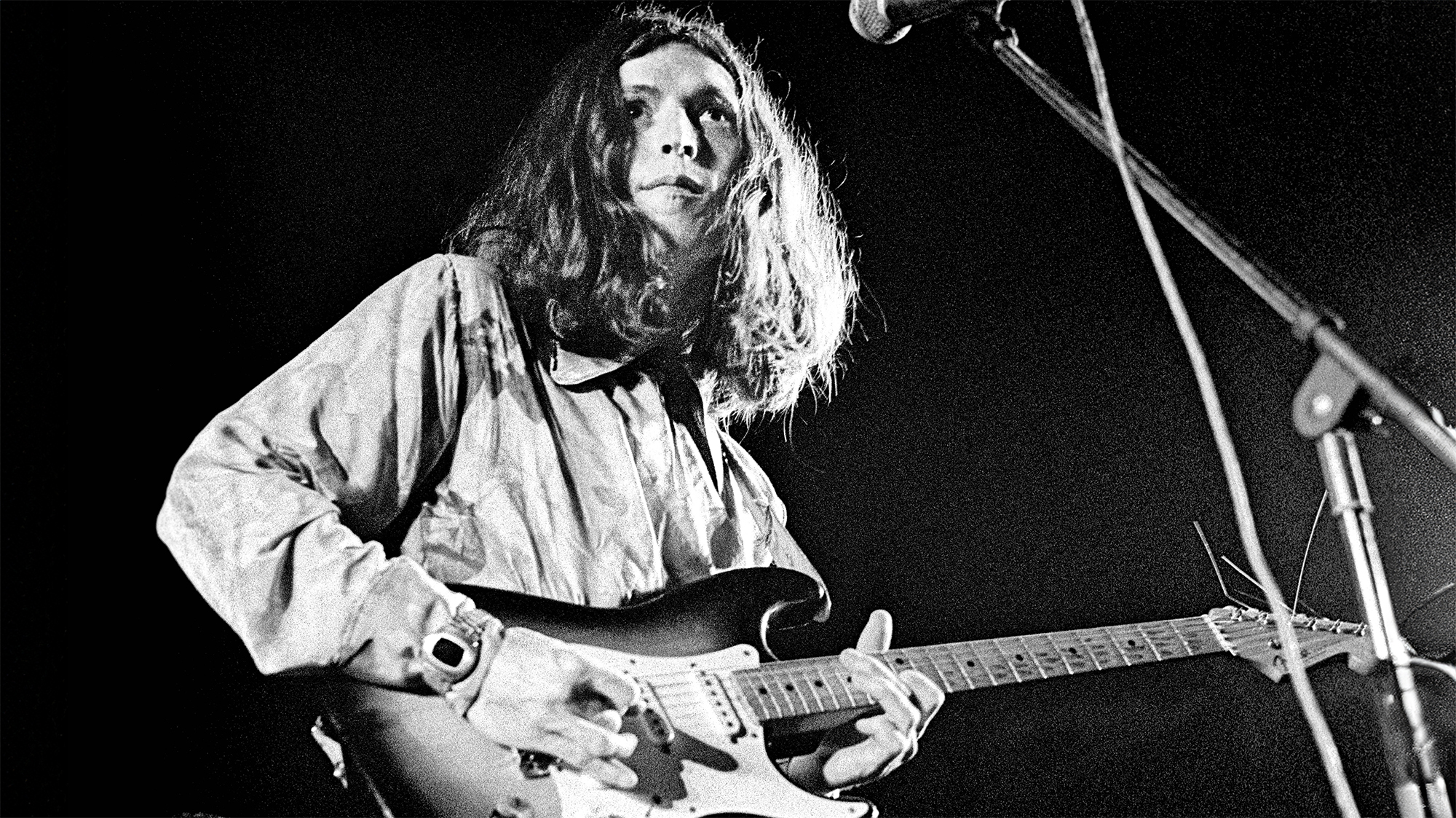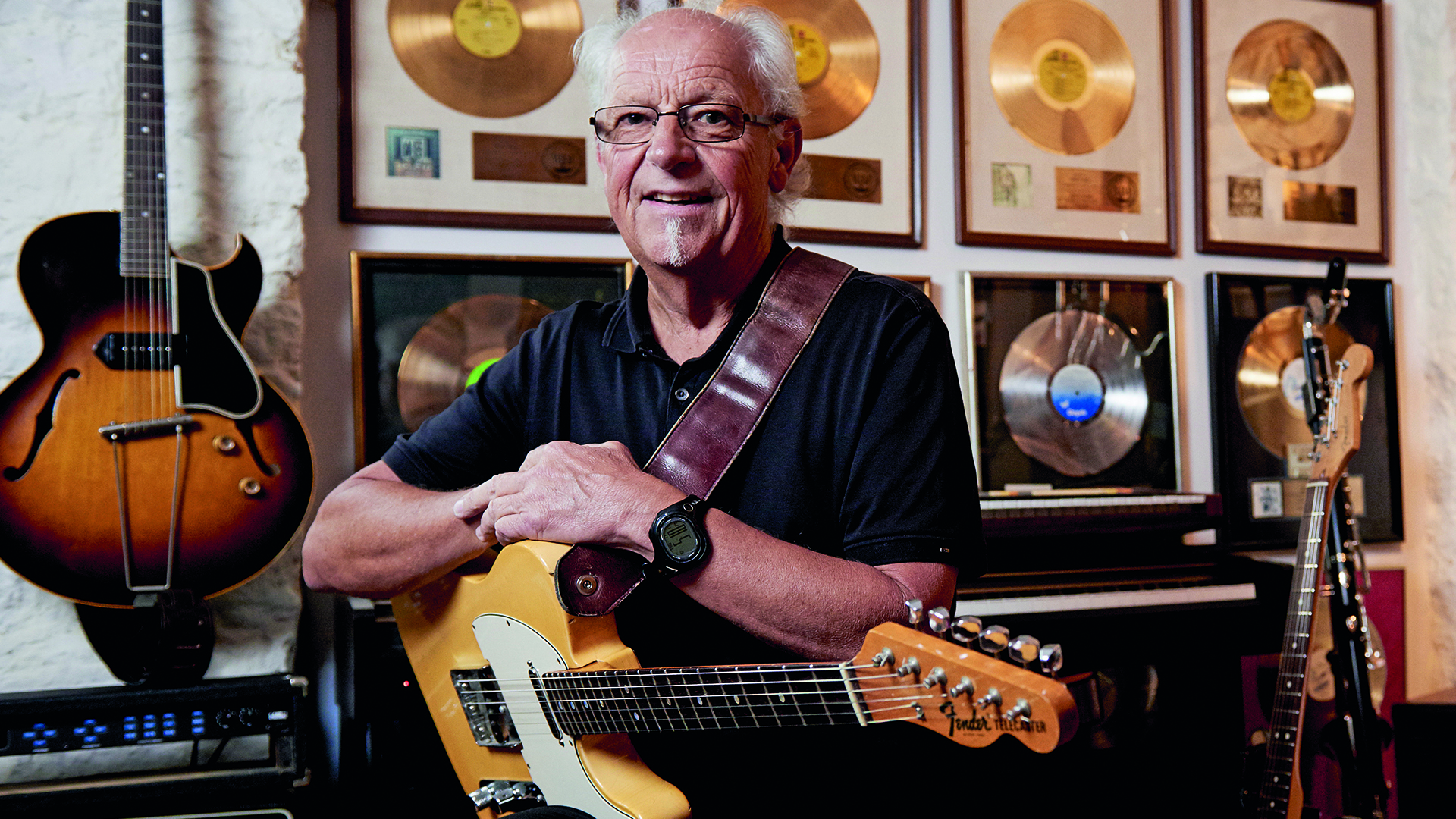"I saw Stevie Wonder with one about four years ago. Another guitar player gave me this. No one else has got one." Jeff Beck demonstrates his 'Blow by Blow'-era rig in 1974
Following a performance of "Get Down in the Dirt," the guitar icon offered a rare close-up look at his gear, including his "Oxblood" Les Paul, amps, pedals and a mysterious talk box
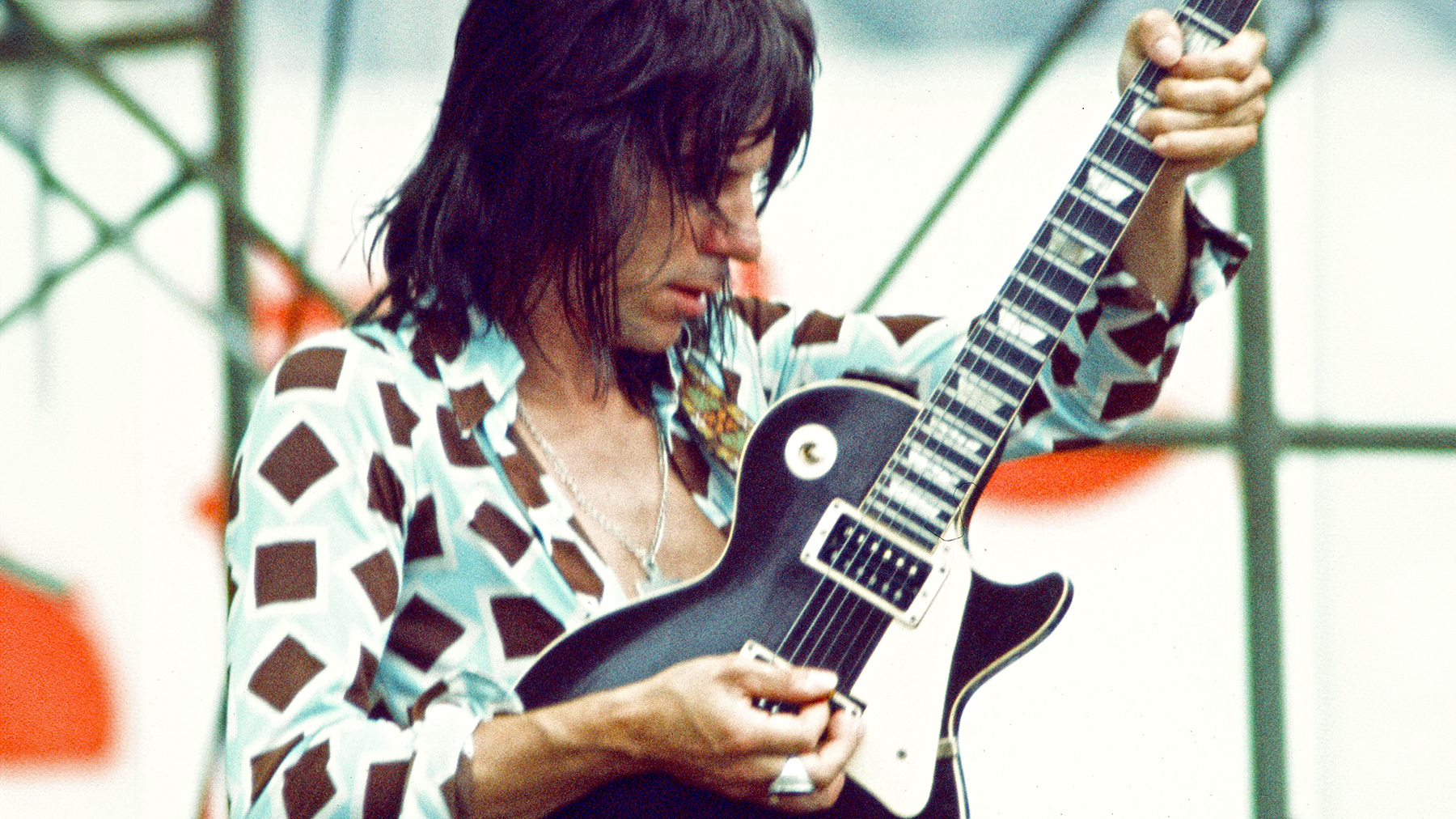
As entertaining as they are, gear breakdown videos are fairly common these days. Every time a major artist rolls into town, there's a good chance someone's there to document the latest addition to a rig or a fresh signature six-string.
But back in the mid-'70s, moments like this were a rarity — even more so when they featured one of the most important players ever to pick up the instrument.
That's exactly what happened when Jeff Beck was invited down to the BBC to take part in a show called Five Faces of the Guitar in 1974.
The hour-long show for the Beeb, which featured Beck alongside Paco Peña, John Renbourn, Barney Kessel, and Julian Bream, was hosted by Mike Harding and aimed to showcase the different characteristics and applications of the guitar across five varied musical styles, with Beck representing rock. All very highbrow.
The program happened to catch Jeff Beck at an incredibly important time in his career — just weeks away from recording Blow by Blow, his groundbreaking instrumental rock album. Beck was there promoting his new project with the jazz-fusion outfit Upp. Following a solid performance of "Get Down in the Dirt," he offered an up-close look at the tools that powered his unmistakable tone during this era.
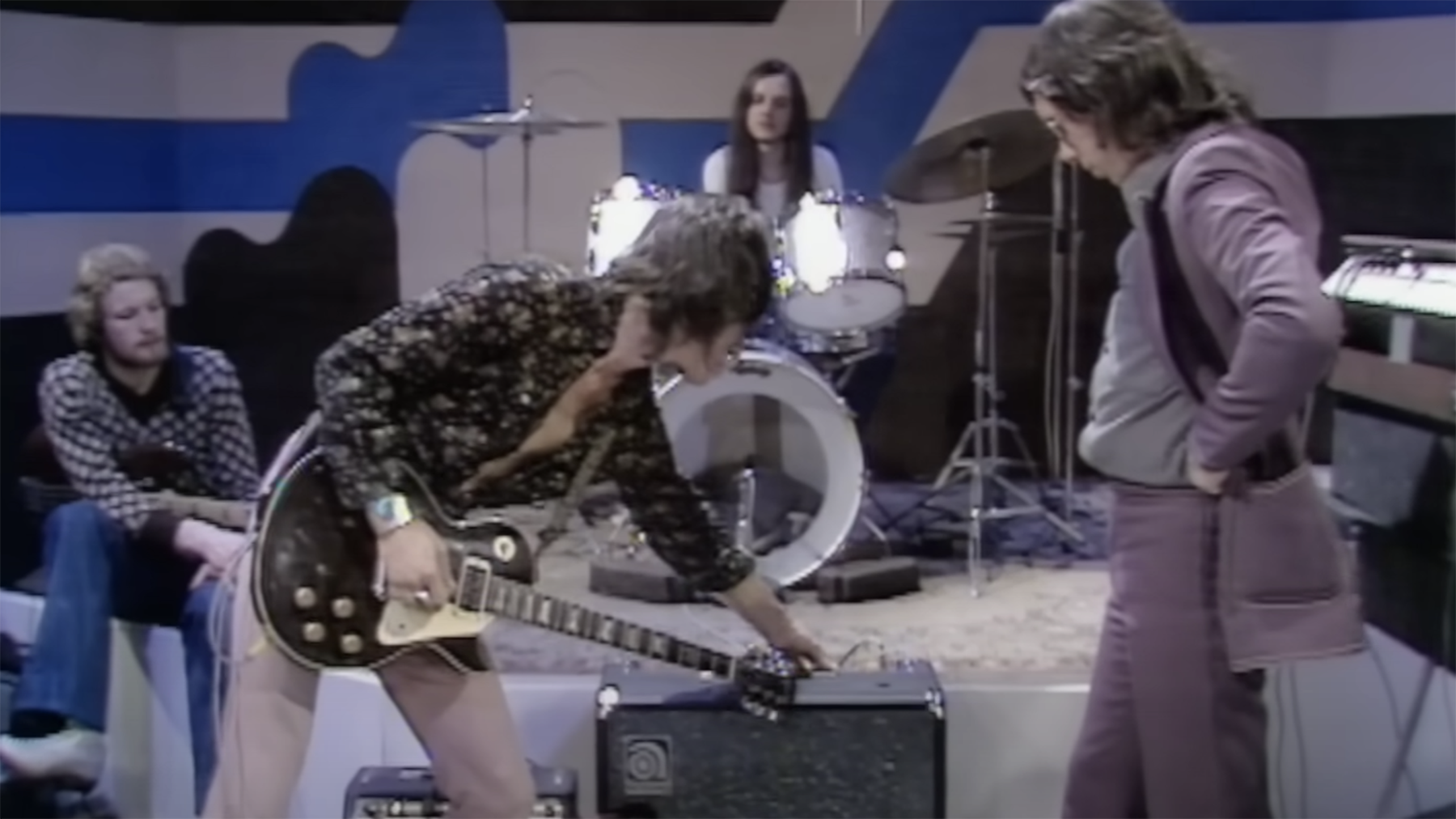
Starting with his "Oxblood" 1954 Gibson Les Paul, it's interesting to note that even over 50 years ago, the tonewood debate was already a topic of discussion. The host, clearly curious about the impact of the former Goldtop LP's body on the overall sound as Beck plays, asks, "Now, how important is the shape?" before gently implying that a solid body wouldn't make much of a difference to the tone compared to the acoustic models featured on the show.
Beck pushes back on the idea, pointing to the quality of the wood as a key factor in its tone.
Get The Pick Newsletter
All the latest guitar news, interviews, lessons, reviews, deals and more, direct to your inbox!
"I think probably the quality of the wood has more to do with it," Beck explains. "The seasoning is as important as the electronic sounds."
Even then — long before the vintage market became a thing — Beck fully understood the significance of materials when it came to guitars and how they aged over time.
Poor Jeff even has to justify the thickness of his guitar strings at one point, explaining that the gauge is thinner compared to an acoustic or classical guitar because he's got "very weak flesh" on his fingers, adding that "the bending I do would probably slice them up like a piece of cheese."
On the floor, Beck's modest setup features a ZB Volume pedal a Dunlop Cry Baby wah and an early '70s Colorsound Overdriver.
"If you hit it at the right point during your solo, you can sustain a note," Beck explains before demonstrating the Overdriver in a somewhat Spinal Tap-esque fashion — although it might just be the hair.
"If you hit it at the right point during your solo, you can sustain a note."
— Jeff Beck
After a look at his Ampeg amplifier, followed by a quick example of how feedback works, the former Yardbird shows off the most curious part of his setup, an odd-looking device called the Bag.
As Beck explains — without exposing all the secrets of his "little toy" — "I won't tell you what's inside it," he teases. "It's too simple..." The guitar sound is fed from an almost cushion-like device through a plastic tube into his mouth, allowing him to manipulate the tone, creating vowel-like effects.
"I saw Stevie Wonder with one about four years ago, and I was lucky enough to bump into another guitar player who very kindly gave me this one," Beck recalls, before adding, "It's nice to have. No one else has got one."
And he wasn't exaggerating. The Bag was manufactured in minimal quantities by Kustom Electronics in 1969 and '70 and retailed at a whopping $100 (that's $813 in today's money). So the likelihood of every budding guitar player having one of these kicking around was slim.

As Beck demonstrates its sonic potential, he explains that it's "very hard to do unless you've got a loud mic."
And that, in a nutshell, was its downfall. As acts like Beck progressed to playing larger and larger venues, the Bag's reliance on an overly hot vocal mic made it largely unusable in a live setting. However, it paved the way for a device like the Heil Talk Box, which became a favourite of Joe Walsh, David Gilmour, and, most famously, Peter Frampton on Frampton Comes Alive! in 1976.
On January 22nd, Beck's estate auctioned his collection through Christie's in London, with the "Oxblood" Les Paul as the star of the show, fetching a staggering £1,068,500 ($1,377,000) — a world record for a Gibson Les Paul at auction. Other iconic axes, such as his longtime white Stratocaster "Anoushka" and the "Yardburst" Gibson Les Paul, sold for £1,008,000 ($1,298,000) and £403,200 ($519,800), respectively.
The auction totaled £8,727,284 ($11,245,000) in sales, with over $100,000 being donated to the Folly Wildlife Rescue in Tunbridge Wells in Jeff and his wife Sandra's name.

The Editor in chief of Guitar Interactive since 2017, Jonathan has written online articles for Guitar World, Guitar Player and Guitar Aficionado over the last decade. He has interviewed hundreds of music's finest, including Slash, Joe Satriani, Kirk Hammett and Steve Vai, to name a few. Jonathan's not a bad player either, occasionally doing gear reviews, session work and online lessons for Lick Library.
"Get off the stage!" The time Carlos Santana picked a fight with Kiss bassist Gene Simmons and caused one of the guitar world's strangest feuds
“It’s a special kind of moment when you hit that first note of a solo and you literally get nothing.” He’s played with David Bowie and the Cure, but Reeves Gabrels says things don’t always go right, even for the pros
